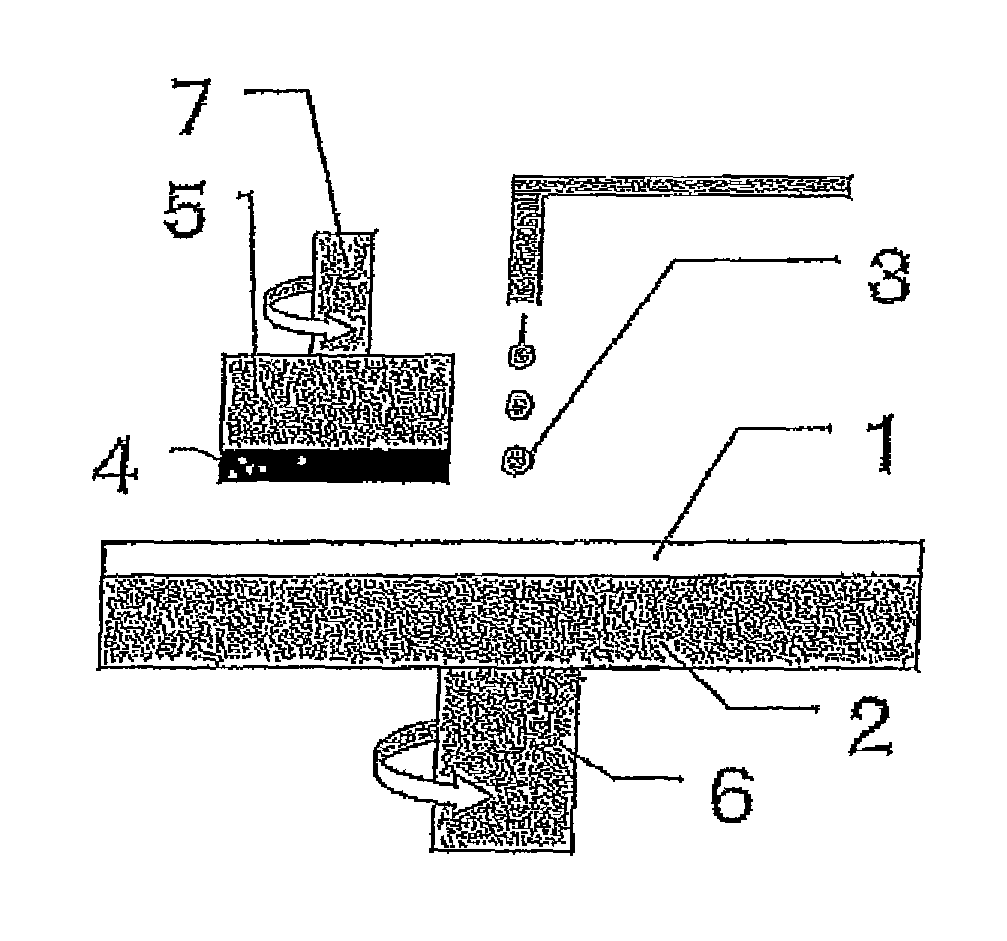Polishing pad
a polishing pad and surface technology, applied in the field of polishing pads, can solve the problems of reducing the speed of planarizing the surface to be processed of the wafer, affecting affecting the quality of the finished product, so as to improve the production efficiency of semiconductor wafers, improve the dressing properties, and maintain the hardness
- Summary
- Abstract
- Description
- Claims
- Application Information
AI Technical Summary
Benefits of technology
Problems solved by technology
Method used
Image
Examples
production example 1
Synthesis of Prepolymer
[0226]To a vessel were added 1229 parts by weight of toluene diisocyanate (a mixture of toluene 2,4-diisocyanate / toluene 2,6-diisocyanate=80 / 20), 272 parts by weight of 4,4′-dicyclohexylmethane diisocyanate, 1901 parts by weight of polytetramethylene ether glycol having a number average molecular weight of 1018, and 198 parts by weight of diethylene glycol, and the mixture was allowed to react at 70° C. for 4 hours to obtain an isocyanate-terminated prepolymer A (NCO concentration: 2.22 meq / g).
[0227]Similarly, 204 parts by weight of toluene diisocyanate (a mixture of toluene 2,4-diisocyanate / toluene 2,6-diisocyanate=80 / 20) and 596 parts by weight of polytetramethylene ether glycol having a number average molecular weight of 1018 were charged into a vessel, and the contents were allowed to react at 70° C. for 4 hours to obtain an isocyanate-terminated prepolymer B (NCO concentration: 1.48 meq / g).
example 1
[0228]To a reaction vessel were added 100 parts by weight of the isocyanate-terminated prepolymer A and 2.4 parts by weight (0.080 equivalent of hydroxyl group per 1 equivalent of isocyanate group) of ethylene glycol monophenyl ether, and the contents were mixed in a planetary mixing and defoaming apparatus, and defoamed to obtain a liquid mixture. After that, 24.1 parts by weight of 4,4′-methylenebis(o-chloroaniline) (IHARACUAMINE-MT, manufactured by Ihara Chemical Industry Co., Ltd.) which had been melted at 120° C. was added to the liquid mixture, and the resulting mixture was stirred and defoamed in a planetary mixing and defoaming apparatus to prepare a polyurethane raw material composition. The composition was poured into an open mold (800 mm×800 mm in length and width, and 2.5 mm in depth) (casting vessel) and post curing was performed at 100° C. for 16 hours to obtain an unfoamed polyurethane resin sheet. The surface of the sheet was then buffed with a buffing machine (manuf...
PUM
| Property | Measurement | Unit |
|---|---|---|
| hydroxyl value | aaaaa | aaaaa |
| hydroxyl value | aaaaa | aaaaa |
| average cell diameter | aaaaa | aaaaa |
Abstract
Description
Claims
Application Information
 Login to View More
Login to View More - R&D
- Intellectual Property
- Life Sciences
- Materials
- Tech Scout
- Unparalleled Data Quality
- Higher Quality Content
- 60% Fewer Hallucinations
Browse by: Latest US Patents, China's latest patents, Technical Efficacy Thesaurus, Application Domain, Technology Topic, Popular Technical Reports.
© 2025 PatSnap. All rights reserved.Legal|Privacy policy|Modern Slavery Act Transparency Statement|Sitemap|About US| Contact US: help@patsnap.com


